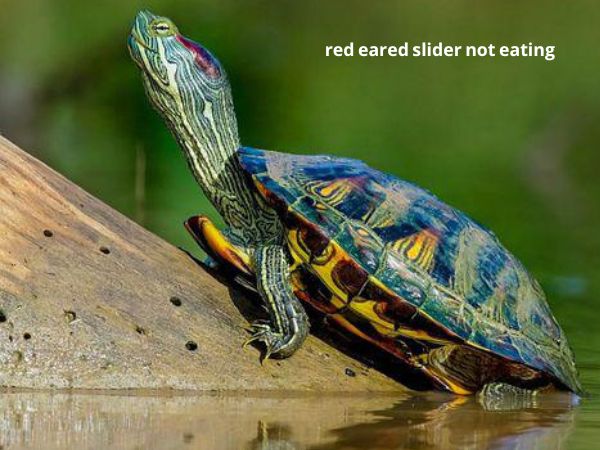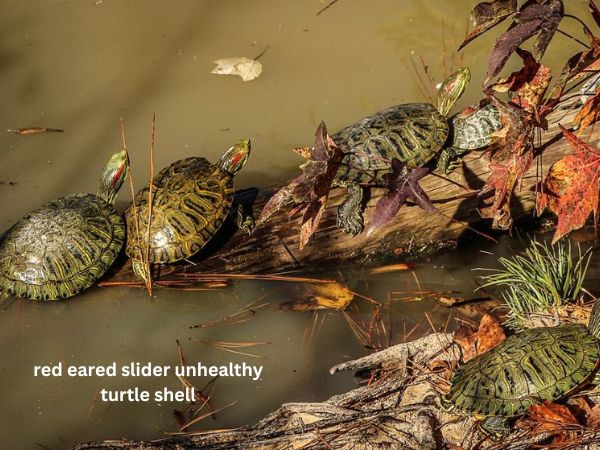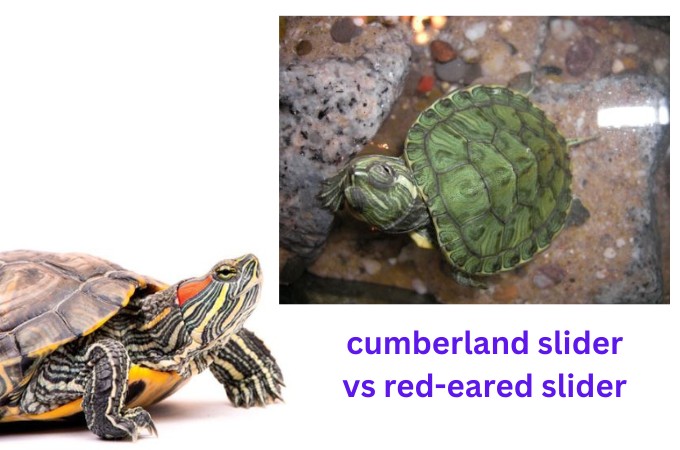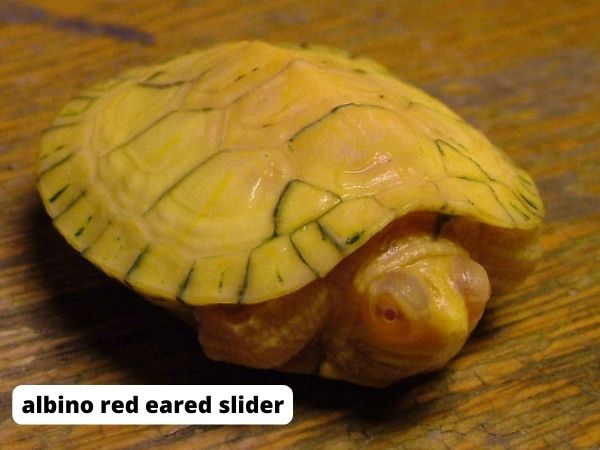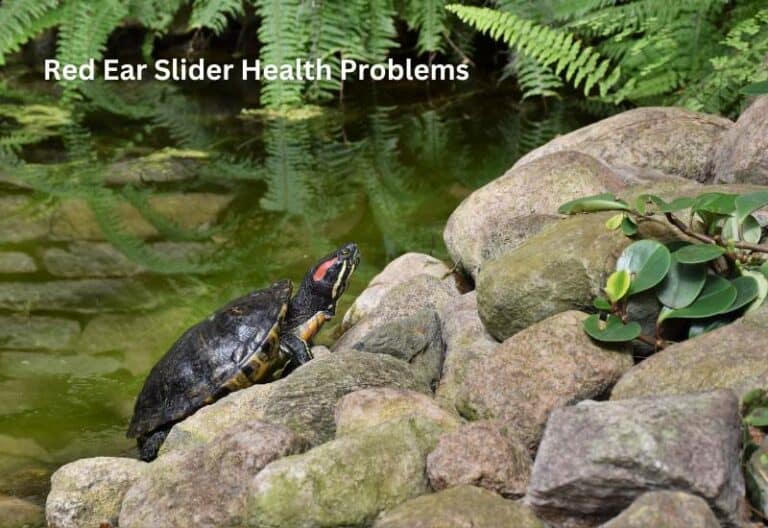Why Your Red Eared Slider Skin Shedding & what should do?
Today we discuss Red Eared Slider Skin Shedding. Red-eared sliders are a type of water turtle that is popular as a pet. They can grow to be quite large, and males often have a red stripe on their heads. One common problem that affects red-eared sliders is skin shedding.
Some things you can do to help your slider through this process are: to make sure the water is clean and at the right temperature, provide a basking area where your turtle can get warm, and make sure there is plenty of hiding space. If your slider’s skin shedding seems excessive or if he appears to be in pain, take him to a veterinarian immediately.
The process of red eared slider skin shedding:
The red eared slider, like other reptiles, sheds its skin periodically. A process is known as molting. The new skin grows underneath the old one and when it’s ready, the old skin splits and peels off.
Red Eared Slider Skin Shedding usually start around their heads and necks first. As they continue to grow, they will shed the skin around their bodies. Turtles typically eat their old skin soon after they shed it. This is because the old skin is full of nutrients that help the turtle rebuild its old shell or “scute”.
The frequency of molting varies depending on the age and environment of the slider, but generally, they will shed their skin every two to four weeks. During this time they may be inactive and refuse to eat as they concentrate on shedding their skin.
After Red Eared Slider Skin Shedding, sliders typically have a brighter color and are more active as they begin to explore their new surroundings.
The benefits of shedding for red eared sliders:
Red eared sliders are omnivorous and eat a wide variety of foods, both animal and plant-based. However, they require a diet that is high in protein and low in carbohydrates. In the wild, they mostly eat insects, crustaceans, fish, and amphibians.
A healthy diet for red eared sliders includes plenty of fresh vegetables (especially greens) and fruits, as well as frozen or live fish, crickets, mealworms, and waxworms. They should also be offered a calcium supplement to ensure good bone health.
Red Eared Slider Skin Shedding is an important part of the natural molting process for turtles and helps them to replace old or damaged skin cells. It’s also beneficial because it helps to remove parasites.
6 Signs that your red eared slider is shedding:
- The turtle’s shell may appear dull or dry
- The turtle may seem restless or irritable
- The turtle may stop eating
- The turtle may hide more than usual
- The turtle’s skin may appear dull or dry
- The turtle may rub its head or body against objects in its enclosure
3 ways of helping your red eared slider shed:
One of the best ways to help your red eared slider shed properly is to provide it with a humid hideaway. This can be as simple as a cardboard box filled with moistened sphagnum moss. The hideaway should be large enough for the turtle to turn around comfortably and should be placed in an area of the tank where the humidity levels are highest.
Another way is to offer it a diet that is high in calcium and low in fat. A diet that contains too much fat can lead to obesity, which can in turn cause pyramiding. A diet that is high in calcium, on the other hand, will help to keep the turtle’s shell healthy and strong. A variety of vegetables and fruits, as well as commercially prepared turtle pellets, can provide your red eared slider with the nutrition it needs.
Ultimately, it is important to make sure that your turtle has plenty of space to exercise. A large tank with a basking area is ideal, as it will give the turtle room to swim and explore. A lack of exercise can also lead to pyramiding, so it is important to provide your red eared slider with ample opportunity to move around.
red eared slider excessive skin shedding:
If your red-eared slider is shedding an excessive amount of skin, there could be a number of reasons why. Some potential causes include poor nutrition, vitamin deficiencies, dehydration, stress, and infection.
The best thing to do in this case is to take your turtle to a veterinarian for a check-up. The vet will be able to rule out any potential health problems and prescribe the appropriate treatment. In the meantime, make sure your turtle has a healthy diet and plenty of fresh water to drink.
red eared slider shedding skin husbdry:
If your Red Eared Slider Skin Shedding, you’ll want to make sure that it has a healthy and comfortable habitat. Here are some things to keep in mind:
- Make sure the water is clean and fresh. Change it regularly.
- Keep the temperature of the water consistent.
- Give your turtle a place to bask in the sun.
- Make sure there is plenty of shelter and hiding places in the tank.
tips for you :
Red eared sliders are generally hardy creatures, but there are a few things that can cause problems for them. One is feeding them an inappropriate diet. Another is keeping them in water that is too cold or too warm. It’s also important to provide them with a hiding place so they can feel safe and secure.
If you’re thinking about getting a red eared slider, or if you already have one, it’s important to do your research so you can provide them with the best possible care. They can make great pets, but they need the right environment and diet to stay healthy and happy.
Frequently Asked Questions (Faqs):
Answer:
Red Eared Slider Skin Shedding is a natural process . Red eared sliders shed skin every 4 to 6 weeks.
Answer:
It takes a red eared slider about 2-4 weeks to shed. The length of Red Eared Slider Skin Shedding takes for a turtle to shed usually depends on the size of the turtle and the environment in which it lives.
For example, turtles that live in a dirty, humid environment will take longer to shed than those that live in a clean, dry environment.
Answer:
It is not necessary to help your Red Eared Slider Skin Shedding, as they are able to do it on their own. However, if you notice that your turtle is having difficulty shedding, you can help them by gently rubbing its shell with a soft cloth.
Answer:
1. It could be a sign of stress or illness.
2. The shedding could be caused by a poor diet or lack of vitamin A in the diet.
3. It could be a result of too much humidity in the enclosure.
4. The shedding could be a reaction to a new environment or substrate.
Answer:
A turtle shedding looks like the turtle is peeling off its skin.
Answer:
It can take a turtle anywhere from a few days to a few weeks to shed its skin.
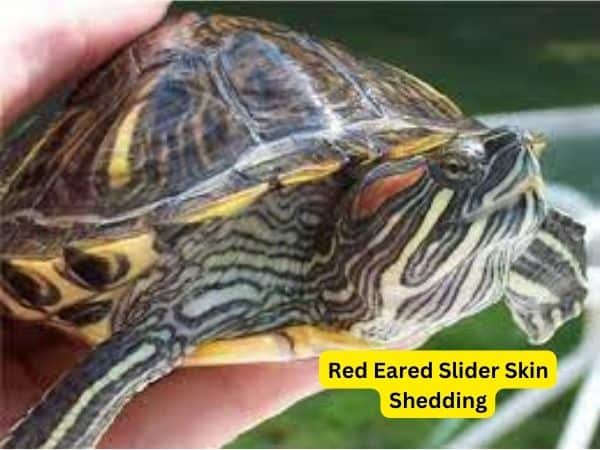
final words:
Red eared slider turtles are one of the most popular pet turtles. They are known for their vibrant red markings and their love of water. While they are relatively easy to care for, they can be susceptible to a condition known as pyramiding. Pyramiding is when the turtle’s shell grows unevenly, causing it to appear pyramid-shaped. This can be caused by a variety of factors, including poor diet, lack of exercise, and improper humidity levels.
